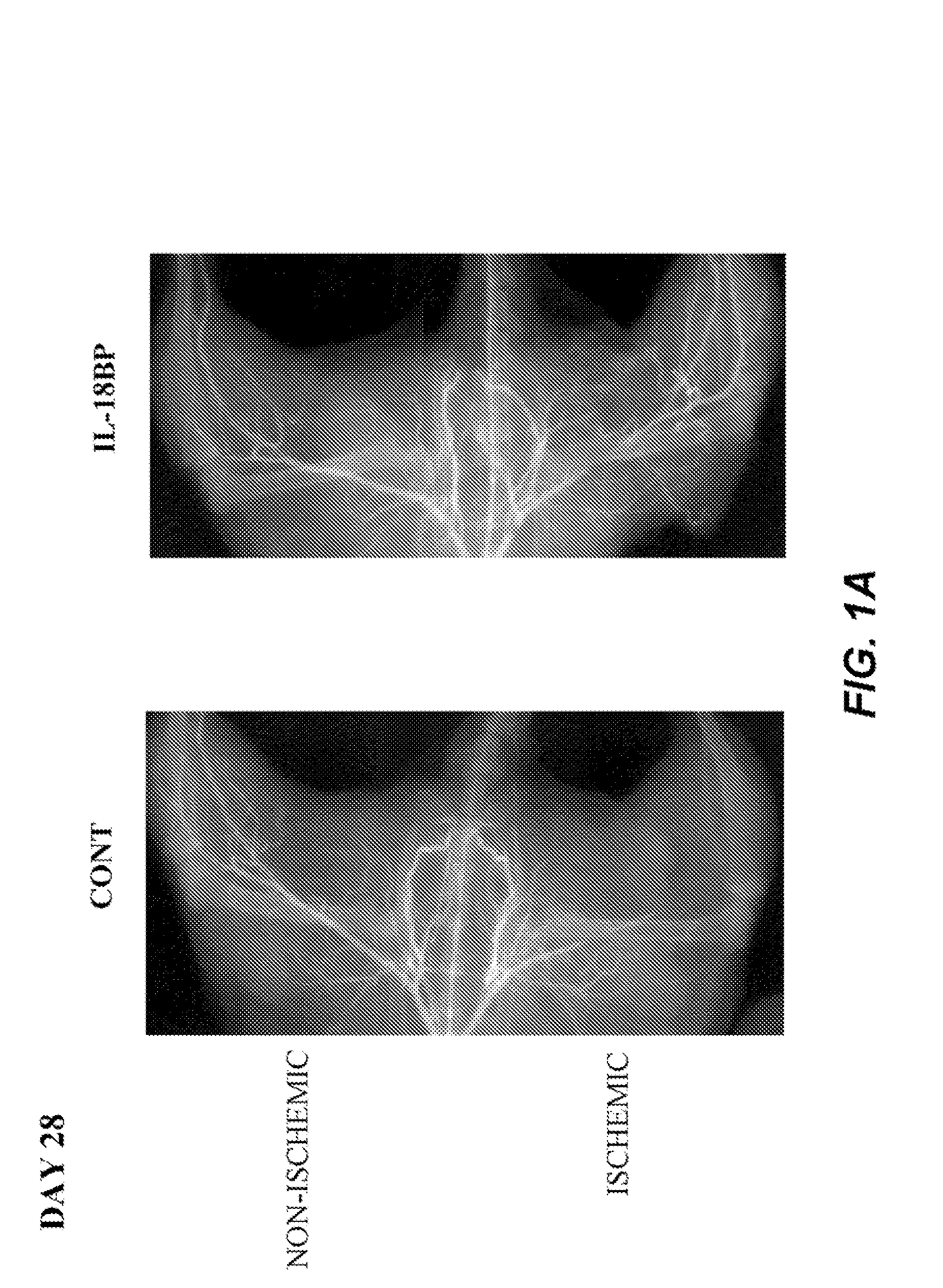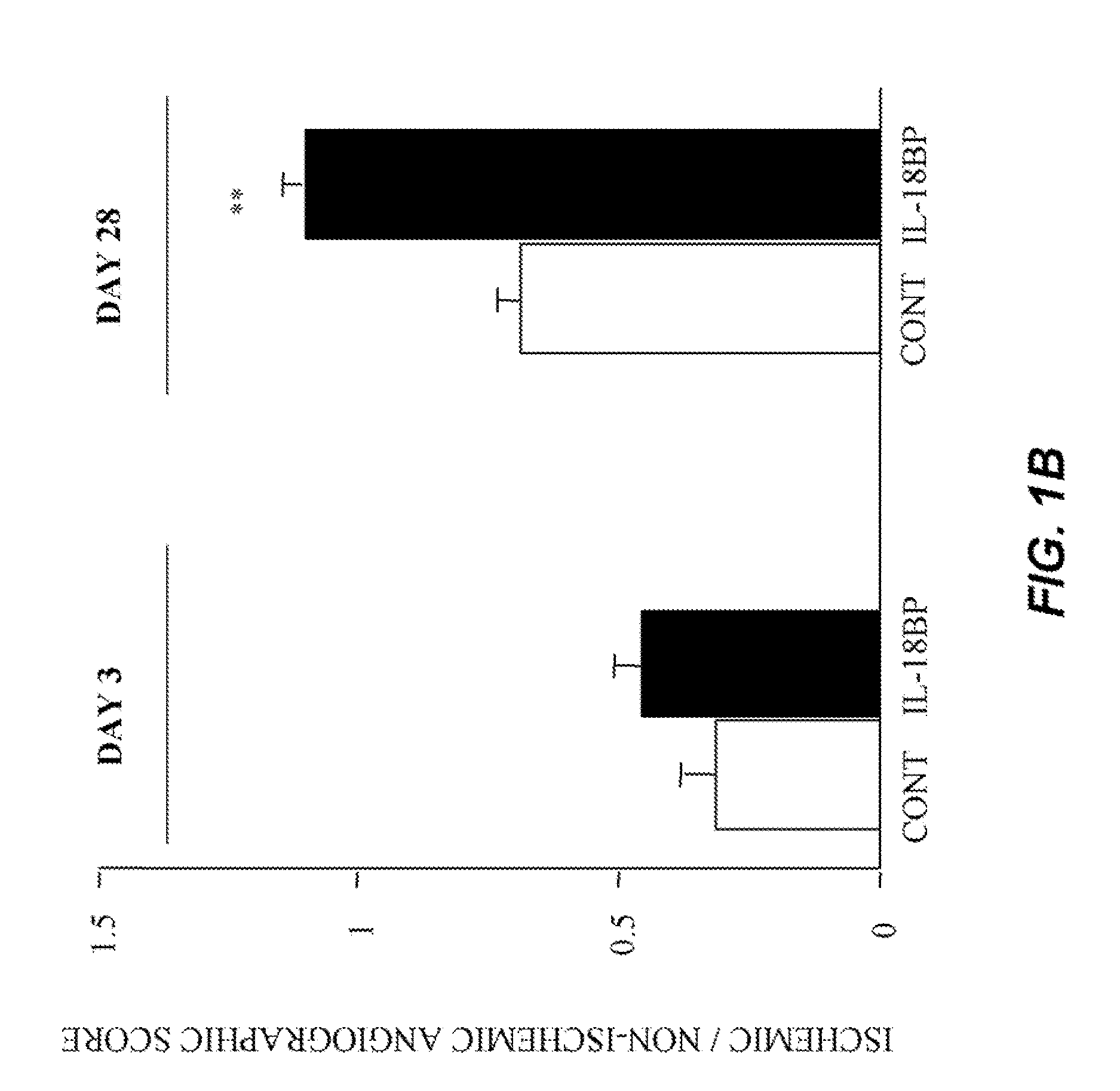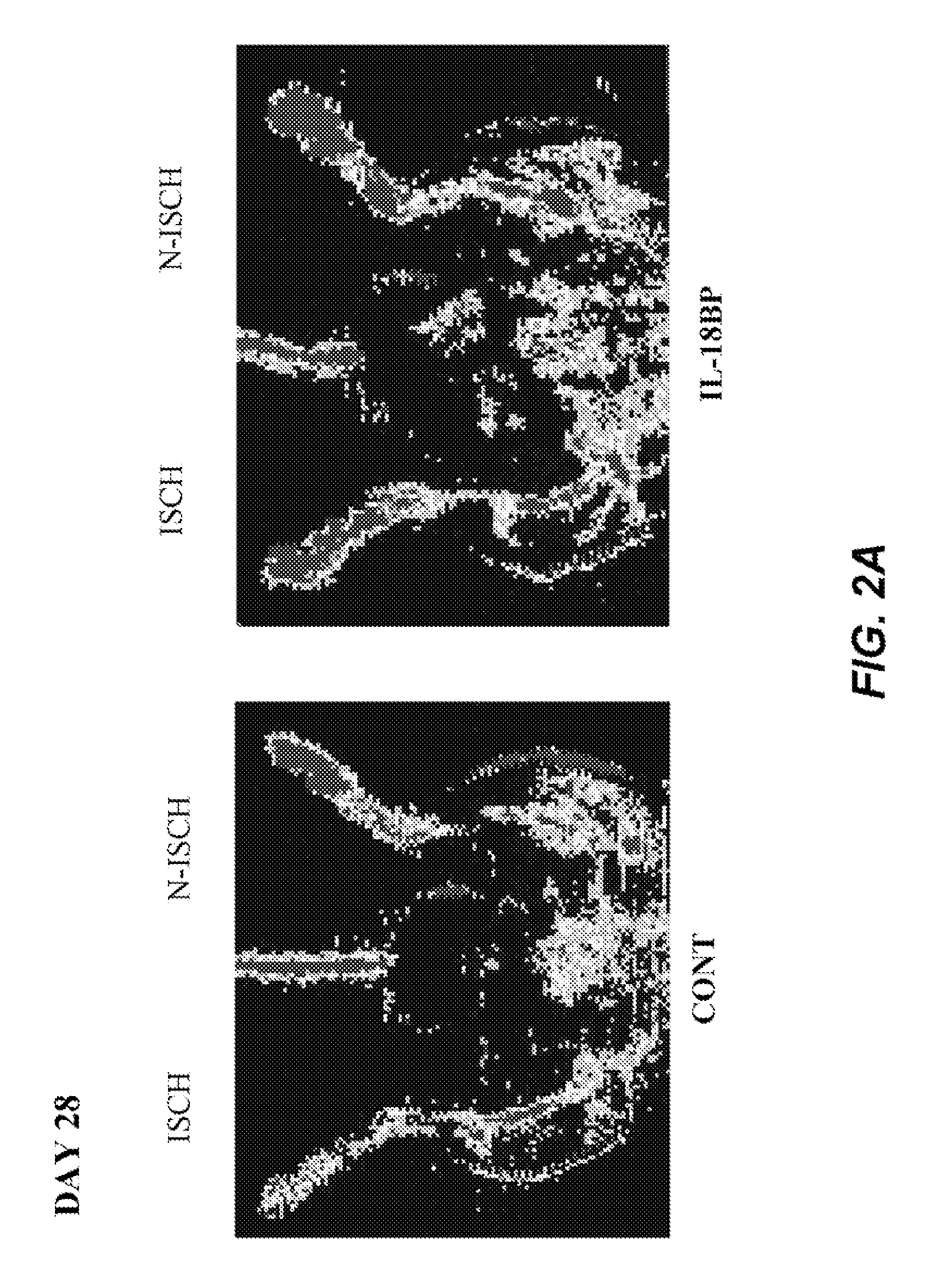Method of treating peripheral vascular diseases using IL-18 inhibitors
a technology of il-18 and inhibitors, applied in the field of il-18 inhibitors, can solve the problems of affecting the growth of nails and hair, severe ischemic foot pain, skin dry and scaly, and poor nail and hair growth, and achieve the effect of enhancing the endogenous production of an inhibitor and effective inhibiting the amount of an il-18 inhibitor
- Summary
- Abstract
- Description
- Claims
- Application Information
AI Technical Summary
Benefits of technology
Problems solved by technology
Method used
Image
Examples
example 1
Inhibition of IL-18 Reduces Peripheral Ischemia
[0135]Methods:
[0136]Introduction of Hindlimb Ischema
[0137]Male C57BL / 6J mice (Iffa Creddo, Lyon, France) underwent surgery to induce unilateral hindlimb ischemia. Animals were anesthetized by isoflurane inhalation. The ligature was performed on the right femoral artery, 0.5 cm proximal to the bifurcation of the saphenous and popliteal arteries. Mice (7 animals per group) were then housed under specific pathogen-free conditions for 3 or 28 days. To examine the role of IL-18BP in ischemia-induced angiogenesis, a group of mice was injected with 60 μg of the murine IL-18BP expression plasmid, pcDNA3-mIL18BP in both tibial cranial muscles, as previously described (Mallat et at, 2001). The control mice were injected with the same dosage of the control empty plasmid. Transcutaneous electric pulses (8 square wave electric pulses of 200 V / cm, 20 ms duration at 2 Hz) were delivered by a PS-15 electropulsator (Genetronics) using two stainless stee...
example 2
Regulation of VEGF, Phospho-Akt and eNOS Protein Level
[0154]Method:
[0155]VEGF, phospho-Akt and eNOS (endothelial nitric oxide synthase protein) expression was determined by western-blot in ischemic and non-ischemic legs, as previously described (Silvestre et al., 2000; Silvestre et al., 2001).
[0156]Results:
[0157]VEGF. At day 3, no changes in VEGF protein level were observed between the ischemic and non-ischemic legs, in either group. At day 28, in control mice, VEGF protein content tended to increase in the ischemic leg when compared with the non-ischemic one, but this did not reach statistical significance. In contrast, VEGF protein level of the ischemic leg was markedly upregulated by 120% in IL-18BP-treated mice compared to controls (p<0.05) (FIG. 3).
[0158]Phospho-Akt. At day 3, phospho-Akt protein level was unchanged in ischemic and non-ischemic hindlimbs whatever the treatment. At day 28, in control mice, phospho-Akt protein content was increased by 60% in ischemic hindlimb ove...
example 3
Effect of IL-18BP on EPCs (Endothelial Progenitor Cells)
[0160]Methods:
[0161]Flow Cytometry Analysis
[0162]EPCs cells are thought to derive from Sca-1-positive hematopoietic progenitor cells (Takahashi et al., 1999). The percentage of monuclear cells expressing the EPCs marker protein Sca-1 was then determined by flow cytometry. Seven days after ischemia, mononuclear cells were isolated from peripheral blood (300 μl) and from bone marrow of mice treated with either the empty pcDNA3 plasmid or the pcDNA3-mIL18BP plasmid (n=5 per group). Bone marrow cells were obtained by flushing the tibias and femurs. Low density monuclear cells were isolated by density-gradient centrifugation with Ficoll. Mononuclear cells were then incubated with fluorescein isothiocyanate (FITC) conjugated monoclonal antibodies against Sca-1 (D7, BD Pharmingen). Isotype-identical antibodies served as controls.
[0163]EPC Differentiation Assay
[0164]Immediately after isolation, 5.106 bone marrow derived monuclear cells...
PUM
 Login to View More
Login to View More Abstract
Description
Claims
Application Information
 Login to View More
Login to View More - R&D
- Intellectual Property
- Life Sciences
- Materials
- Tech Scout
- Unparalleled Data Quality
- Higher Quality Content
- 60% Fewer Hallucinations
Browse by: Latest US Patents, China's latest patents, Technical Efficacy Thesaurus, Application Domain, Technology Topic, Popular Technical Reports.
© 2025 PatSnap. All rights reserved.Legal|Privacy policy|Modern Slavery Act Transparency Statement|Sitemap|About US| Contact US: help@patsnap.com



